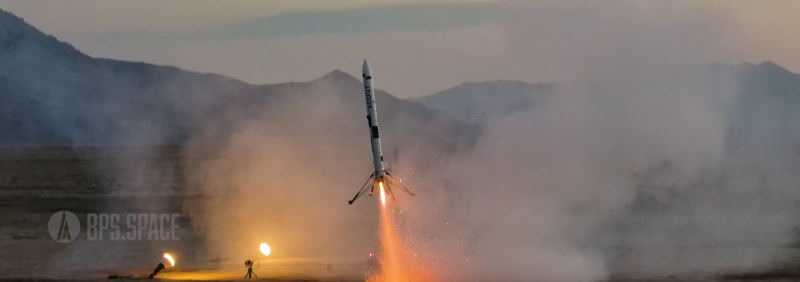If you’ve been following [Joe Barnard]’s rocketry projects for the past few years, you’ll know that one of his primary goals has been to propulsively land a model rocket like SpaceX. Now, 7 years into the rollercoaster journey, he has finally achieved that goal with the latest version of his Scout rocket.

Many things need to come together to launch AND land a rocket on standard hobby-grade solid fuel rocket motors. A core component is stabilization of the rocket during the entire flight, which achieved using a thrust-vectoring control (TVC) mount for the rocket motors and a custom flight computer loaded with carefully tuned guidance software. Until recently, the TVC mounts were 3D printed, but [Joe] upgraded it to machined aluminum to eliminate as much flex and play as possible.
Since solid-fuel rockets can’t technically be throttled, [Joe] originally tried to time the ignition time of the descent motor in such a manner that it would burn out as the rocket touches down. The ignition time and exact thrust numbers simply weren’t repeatable enough, so in his 2020 landing attempts, he achieved some throttling effect by oscillating the TVC side to side, reducing the vertical thrust component. This eventually gave way to the final solution, a pair of ceramic pincers which block the thrust of the motors as required.
Another interesting component is the landing legs. Made from light carbon fiber rods, they are released by melting a rubber band with nichrome wire and fold into place under spring tension. They also had to be carefully refined to absorb as much impact as possible without bouncing, which killed a few previous landing attempts.
Scrolling back through [Joe]’s videos and seeing the progress in his engineering is absolutely inspiring, and we look forward to his future plans. These include a functional scale model of the belly-flopping starship, a mysterious “meat rocket”, and the big one, a space shot to exceed 100 km altitude.















It’s been so cool watching this come together over the years.
Words are insufficient to describe the awesomeness of this.
Not a smooth landing but still awesome.
The engines suck. Something like a H2O2 engine that can be easily throttled would be great. But so far, nothing that doesn’t use hazardous materials, cryogenics, or heavy fuel tanks.
Hybrid solid fuel/liquid oxidizer might be just the ticket. O2 or peroxide tanks would have to be high pressure, but no turbo pumps. High % peroxide is nasty, but not hydrazine. (Punchline ‘I’ll take some H2O too’).
The partial thrust reversers are a clever solution. Props.
Yes. The fact that he did it with those black powder type engines with their simple nozzles is quite something. With more predictable solid rockets he should get pretty good control.
Maybe he will try it now with engines like they use in Hi-Power rocketry. I don’t know if they make some long burn time re-loadable engines or not.
Long ago I saw some thruster engine nozzles made of very thin titanium. A plasma spray torch was used to spray titanoium on an aluminum mandrel and then the aluminum was etched away with NaOH (I think). He could do that to make the deflectors/reversers
This is just amazing. Well done!
That was awesome. A real accomplishment. And it looks like a great place to try these experiments. Where we shoot high power, you don’t want any ‘fire’ on the ground on ground approach. A forest fire is a good way to lose a site.
“trust-vectoring control” :)
Trust the vectoring control.
Fixed, thanks
change it back!
Very impressive, chapeau at this awesome achievement <3
Hysteresis isn’t your friend. Or maybe it is… 🤔
Pfft. I accomplished this accidentally in the mid-1960s by using an engine that was way underpowered for the weight of my homemade rocket. It got perhaps ten feet into the air, then settled back down stably on its fins (clearly, that engine didn’t have uniform thrust during its burn period). It stayed upright even after the ejection charge kicked out the parachute. Too bad that was long before the days of cellphone cameras, but at least I had a witness.
BTW, an entertaining way to use those little engines is to slit the paper shell then peel it away to leave only the nozzle and propellent. Prop it up against a curb, ignite it with a fuse, and watch a ball of fire go streaking across the sky (the nozzle gets it going in the desired direction before quickly falling away). As a kid in less-uptight times, those rocket engines were one of my favorite toys for all sorts of hazardous experiments. Another example: attach one to a roller skate.